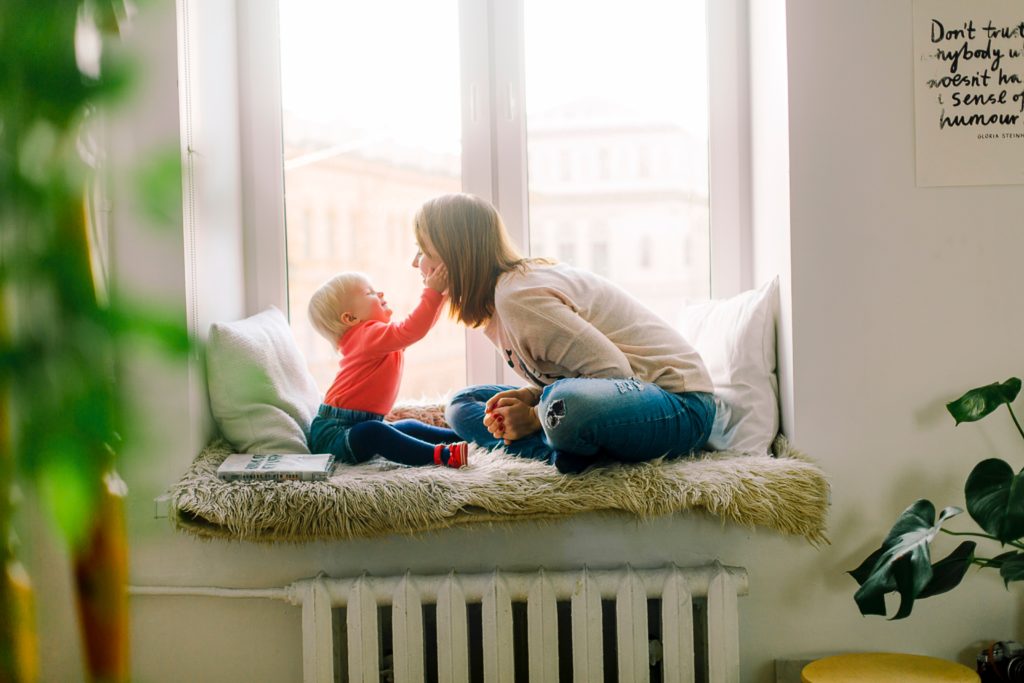Some children are fine in the car. Others? Not so much. If your toddler often looks peaky while travelling, or if they tend to get upset during car journeys, it might be a sign that they’re suffering from car sickness.

In this post we’ll explore why toddlers are more likely to experience car sickness, and offer some tips on how to make them feel better.
Why Do Toddlers Get Car Sickness?
Car sickness is very common for small children, but a lot of the time it doesn’t really start until after they’re two years old. Even a baby who nods off and sleeps in peace during every car journey might grow into a small child who suffers from motion sickness.
What Causes Motion Sickness?
It’s the result of conflicting signals in the brain. The eyes tell the brain one thing, but the inner ear balance systems tell a completely different story.
Some adults get car sickness while reading. This is because while your eyes see the static text on the page, your balance mechanism tells your brain that you’re moving. It’s this disconnect that leads to the feeling of nausea. Other symptoms of car sickness can include tiredness, headaches, unhappiness, and a general feeling of discomfort.
Because car sickness is caused by this disconnect, the symptoms are not necessarily always triggered by the motion of the car. Certain smells, frequent head movements, bendy roads, or a focus on nearby objects can all trigger car sickness.
Why are Toddlers More Affected by Car Sickness?
So why are toddlers more likely to feel car sickness than others? We don’t really know for sure! It might be because their senses are still developing, and they feel their surroundings more acutely. Or it could be because they constantly seek engagement and stimulation, so they’re more likely to stare intently at nearby objects, like books or iPads.
In any case, it seems that children aged two to 12 are more likely to experience car sickness than anyone else. The bad news is that we can’t really explain why. The good news is there are lots of things you can do to help make car sickness less likely, and to alleviate the symptoms should they arise.
How to Prevent Car Sickness in Toddlers and Young Children
- Plan Your Trip Carefully – If it’s possible to avoid bendy or bumpy roads, do so. Also, make all of your child’s pre-journey meals as bland as possible. Go for crackers, bread and water, as rich food might make their symptoms even worse. If your journey’s going to be a long one, plan for regular breaks. You could even try and time your journeys so that they coincide with your child’s nap time.
- Choose the Right In-Car Entertainment – If you’re the driver, you need to focus on the road. You might consider giving your toddler a book, or an iPad, to keep them happy and occupied while you drive. But as we said above, focusing on a nearby object can cause that disconnect in the brain, resulting in car sickness. So why not try another in-car activity? A simple game of I Spy could keep your child occupied while letting you keep your eyes on the road. Or you could play music, or encourage your toddler to look for interesting things out the window.
- Freshen Up – Opening the window can help dispel car sickness, while fresh and invigorating ginger and peppermint-based snacks can help to alleviate the symptoms. Ginger in particular can prove highly effective at easing feelings of nausea.
- Consider Treatment – Applying firm pressure to inside the wrists can help some people cope with car sickness. But this doesn’t work on everyone. And if car sickness is getting to be a real problem for your child, talk to your doctor. They’ll be able to recommend some over-the-counter medication that’s specifically designed to help treat feelings of nausea.
More Travel Tips for Parents
We’ve got loads of guides on our website to help you make travelling with children of all ages as fun and as safe as possible:
- When can children sit in the front seat of a car?
- Child Lock – What is it and how does it work?
- A guide to parents and child parking
- Games to play with children on long car journeys
- The ultimate travelling with kids checklist
Finally, read our essential guide to child car seats here. It contains more information on the law concerning child car seats, on how to choose the right seat for your child, and on how to safely install a child seat in your car.
If you’re insured with Go Girl, we will pay towards the cost of a replacement child car seat in the event of an accident – even if it doesn’t appear to be damaged. For more information, please refer to your policy wording.



